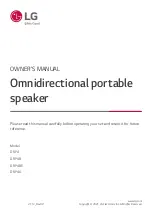
Instrument Function
R&S
®
SMJ100A
317
Operating Manual 1403.7458.32 ─ 14
The clock output signals are assigned in the menu sequence "Setup > Environment >
Global Trigger/Clock/External Inputs > USER Marker /AUX I/O Settings".
External clock reference
An external clock is always supplied via the CLOCK connector. When the external
clock reference is selected, the internal clock is synchronized to it. The table bellow
gives an overview of the connectors the internal clocks are output at.
Connector
Location
Clock Mode
CLOCK OUT
rear panel
Choice of bit clock or symbol
clock
BITCLK
AUX I/O interface, rear panel
Bit clock
SYMBCLK
AUX I/O interface, rear panel
Symbol clock
The active edge of the external clock signal on the CLOCK input is selectable (menu
"Setup > System > Global Trigger/Clock/External Inputs"). Internally the rising edge is
always taken as the active edge. The active rising edge of the internal clocks is there-
fore synchronized with either the rising or the falling edge of the external clock refer-
ence. A symbol clock can be supplied externally or, if internally generated or externally
asynchronous data is being fed in, a multiple of a symbol clock can be supplied.
In order for the clock synthesizer on the R&S
SMJ to be synchronized correctly, the
external clock reference must first be applied and the correct symbol rate must then be
set. Until this has been done the external clock source must not be selected ("Clock
Source External").
The symbol rate set must not deviate from the symbol rate of the external signal by
more than 2% (see also data sheet).
5.8.1.5
Synchronizing Data Signals and Clock Signals
When selecting data signals and clock signals, the following operating modes are pos-
sible:
●
Internal clock and internal data
●
Internal clock and external synchronous data
●
External clock and external synchronous data
●
External clock and either internal data or external asynchronous data
Internal Clock and Internal Data
When internal data is selected, this data is output in serial mode on the DATA connec-
tor or in parallel mode on the PARADATA pins of the AUX I/O interface ("Custom Digi-
tal Modulation").
Baseband Signal - Baseband Block
Summary of Contents for SMJ100A
Page 34: ...Preface R S SMJ100A 18 Operating Manual 1403 7458 32 14 Notes on Screenshots...
Page 86: ...Preparing for Use R S SMJ100A 70 Operating Manual 1403 7458 32 14 LXI Configuration...
Page 826: ...Remote Control Commands R S SMJ100A 810 Operating Manual 1403 7458 32 14 UNIT Subsystem...
Page 828: ...Maintenance R S SMJ100A 812 Operating Manual 1403 7458 32 14 Storing and Packing...
Page 844: ...Hardware Interfaces R S SMJ100A 828 Operating Manual 1403 7458 32 14 BERT Connector...
















































